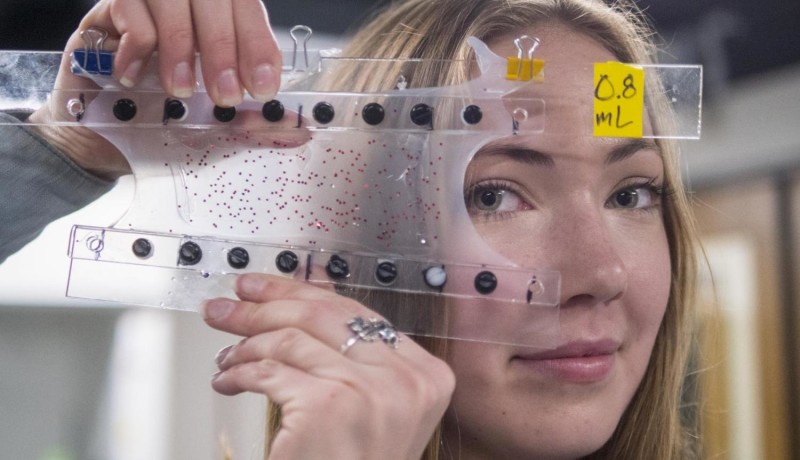'Soft robots' imitate biological muscles
on

At the University of Colorado in Boulder (US) a group of researchers is working on the next generation of robots. Instead of the metallic droids concept, these robots are made from soft materials that can handle a broad range of movements and stresses.
These so-called ‘soft robots’ offer an enormous potential for future applications, because they can adapt to dynamically changing environments and are extremely suitable for interaction with humans. These soft robots can carry out a multitude of tasks, including the grasping of delicate objects such as raspberries or a raw egg, but also the lifting of heavy objects.
A challenge in the area of “soft robotics” is the development of actuators or 'artificial muscles' that can reproduce natural biological movements. The Keplinger Research Group of the College of Engineering and Applied Science has developed an electrically activated artificial muscle that can simulate the expansion and contraction of natural muscles. These devices can be constructed from a wide range of low-cost materials. And are capable of sensing their own movement and repair themselves from electrical damage. This is an important step forwards for soft robotics.
The newly developed hydraulically amplified self-healing electrostatic (HASEL) actuators makes the large mechanical pistons and motors of conventional robots unnecessary. The properties of the soft structures such as strength, speed and efficiency correspond with those of a biological muscle. This will make artificial muscles for human robots, as well as the next generation of prosthetic limbs, a possibility.
An article appeared in Science recently.


Discussion (0 comments)